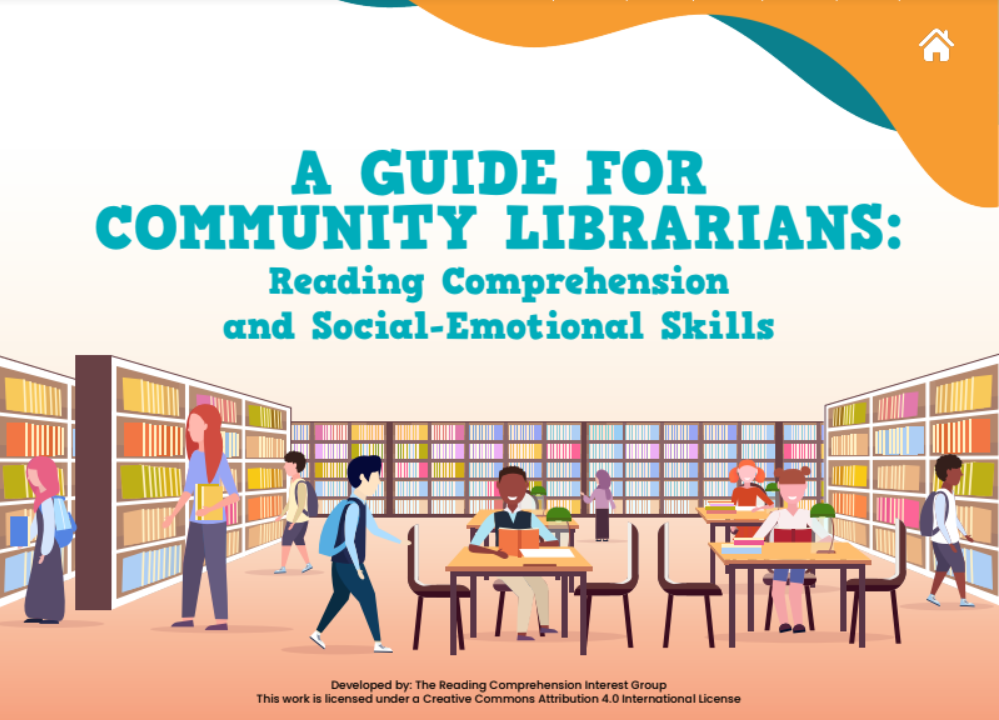The Reading Comprehension Group (formerly known as the Reading Comprehension Special Interest Group) developed this interactive guide to promote uptake of literacy activities that strengthen children’s social emotional learning skills and listening/reading comprehension skills, in the heart of communities through community libraries. The objective of this guide is to help teachers, volunteer teachers and librarians, and community leaders set up libraries where there are none and promote the use of community libraries that already exist via activities that engage the full community. This guide also provides community librarians ways to encourage children to read, to build children’s listening and reading comprehension and social and emotional skills, and to help parents and caregivers learn how they can support their children’s literacy.
A colorful and interactive practical resource. The guide includes key considerations for establishing new community libraries, lays out key tips for implementing Universal Design for Learning principles through community libraries, and provides suggestions for types of no-tech, low-tech, and high-tech materials and resources that may be useful in libraries depending on the rural, peri-urban, or urban context of the libraries and their access to different types of technologies. The guide also includes several suggestions for how community libraries can conduct community outreach to promote a culture of reading and learning and to stimulate children’s motivation to read. The guide offers a reader-friendly definition of SEL and the 5 SEL skills highlighted in the CASEL framework and provides a series of SEL activities librarians can facilitate to support children to strengthen their SEL skills. Starting on page 30, the guide offers a series of suggested questions librarians can discuss with children that allow them to deepen their understanding of a story while practicing key skills that support listening/reading comprehension and social emotional learning at the same time. Finally the guide wraps up with additional SEL and comprehension related activities for children, brief guidance on how librarians can engage caregivers in their children’s learning, and a series of annexes, including tools to help children find books at their reading level and support inclusion in libraries and a case study on a successful community library approach in Zambia.


